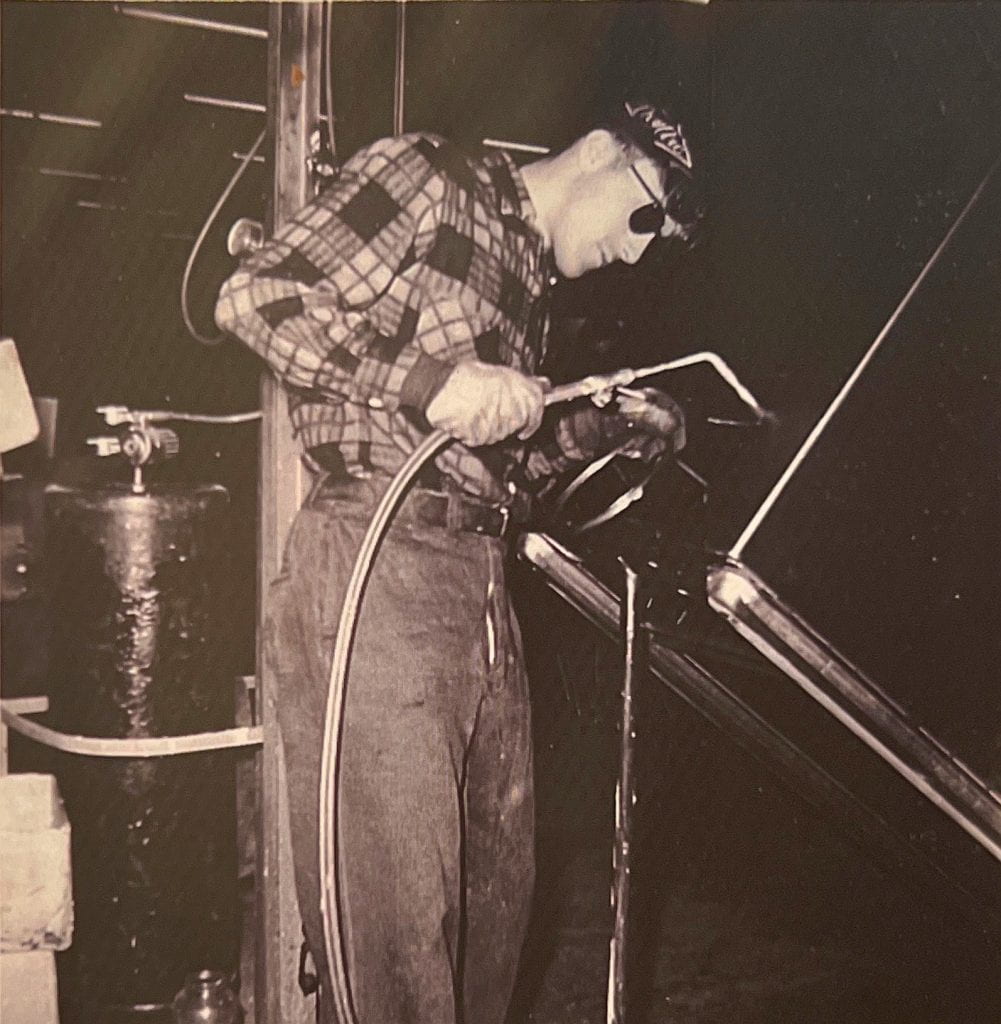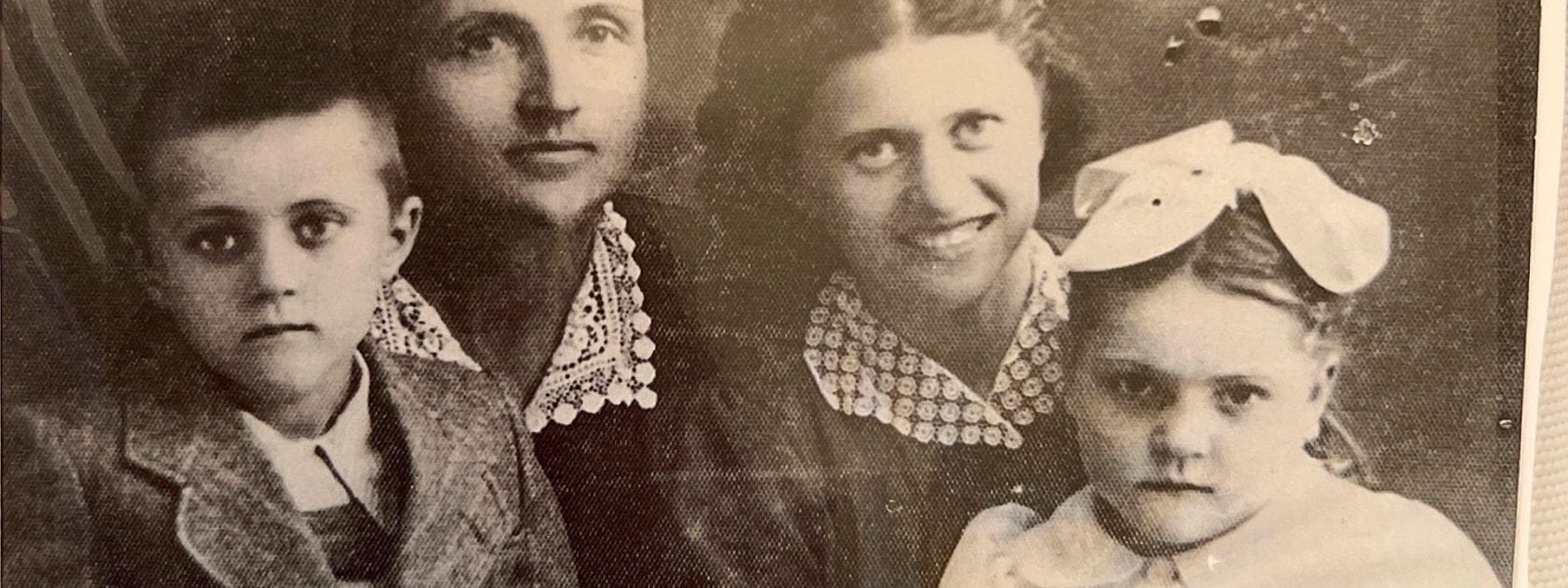Written by Luciano Narvaez

The following is a project that creates a personal record of Eusebio Saretta’s journey of his immigration from Italy to Canada through the the words of his wife Rose Marie Saretta and Maria Pia Prigione.
Table of Contents
Introduction
Throughout history, there are many stories that are often overlooked, hidden in the memories and personal archives of individuals waiting to shed light upon their experiences and others in their communities. The journey of Eusebio Saretta’s immigration to Ontario, Canada from Italy is an important story worth exploring that can share the ups and downs of assimilation into Canada and how Canada’s multicultural identity is truly upheld. On October 26, 2022, I had the honour of being invited into the home of Eusebio’s wife, Rose-Marie Saretta accompanied by their daughter Maria Pia Prigione with the goal of conducting a semi-structured interview to learn about Eusebio’s journey to Canada. In doing so, I was able to create a personal record of Eusebio and study firsthand the experiences of Italian immigration, having obtained photographs and primary records from his family. My goal is to further advance the study of Italian immigration and to shed an always-burning light on the compelling story of Eusebio Saretta.
Interview
The interview follows Eusebio Saretta’s daughter Maria Pia Prigione and her mother Rose Marie interviewed by Luciano Narvaez. The interview took place on October 26, 2022 in the home of Rose Marie in Guelph, Ontario. Eusebio first arrived to New York in 1955 by ship with his family (mother, sister, and brother), from where he took a train to Niagara falls to enter Canada. Eventually making his way to the Toronto station, Eusebio and his family were then picked up by relatives and taken to their new home of Guelph, Ontario. Throughout the interview, Maria and her mother look back to reflect on Eusebio’s life, sharing different ways he encountered Canada’s multiculturalism in his journey while sharing unique Italian traditions that they practiced together. Most importantly, Maria and her mother discuss the kind of man Eusebio was and his willingness to help and take care of others.
The recorded interview can be accessed below.
Summary of Interview
Analysis
While interviewing Maria and Rose Marie, there were many connections to be made to this oral history about the life of Eusebio Saretta’s story and the themes that were discussed by Professor Teresa Russo in HUMN*3800. The theme of multiculturalism is consistently evident throughout Eusebio’s life as his Italian culture and traditions were not only maintained when he arrived in Canada but rather thrived blending them into his community and specially sharing these traditions with his growing family.
From their first steps onto Canadian soil, Eusebio and his family immediately felt the transition of their home and were caught by a chilling climate they had never been used to. Eusebio’s family introduction to Canada is supportive of the discussions in class of the writings of Francesco Bressani who mentions in Breve Relatione (ed. Pivato, The Anthology of Italian-Canadian Writing) that many of the new Italian immigrants who came to Canada in the 17th century highlighted its glacial climate upon their arrival. Despite the abnormal feeling during his entry, Eusebio gradually assimilated into the Canadian culture, becoming involved in the community and attending English night classes to better communicate in his new country. Embracing Canada as his new home, Eusebio continued staying true to his Italian identity along the way maintaining traditions. Using his talents learned from Italy, Eusebio found work in welding and making his own family-style foods, such as salami and wine which he produced with his family for many years.
Eusebio’s wife and daughter speak highly of the multicultural identity already established in Eusebio’s community. It was this blend of cultures such as Polish, Ukrainian, most prominently other Italians, and more sharing a community that must have made Eusebio’s transition not feel so lonely.
As discussed by Robert Harney, in “The Italian Immigrant Experience”, much of the Italian immigration history is rooted in finding economic opportunity. Connecting to Eusebio’s story, despite his roots, there was a want for a “better life” from the war and poverty in Italy. Eusebio’s legacy stems from that decision to leave. The family he has left to continue his legacy speaks highly of his character, his kindness and his work ethic wanting to have left a better life for his family here in Canada to prosper.
Reflection
Before conducting my interview, my hope was simply to learn a little bit about Italian culture. I had never conducted an interview prior and my specialty in my education was more math based, studying primarily in the Economics department. The knowledge and skills I obtained from this project are far more than I could have hoped to gain. In terms of the actual interview, I’ve now learned there are numerous factors to consider in order to prepare before conducting one. It’s crucial to note the attentiveness needed for the interviewee to obtain a fully fleshed-out interview. By allowing them to speak, showing physical attentiveness (nodding and eye recognition), showing sensitivity when needed, and asking follow-up questions you’ve given the interviewee the comfort of entrusting you with their full story. Especially with a story as fragile as Italian immigration, I’ve learned it’s imperative to make every minute as productive as possible. Every little story of Eusebio’s life whether it was of him sharing his Italian culture with his family or hunting ducks with his Baretta shotgun all play an important role in piecing together his cultural journey. Sharing Eusebio’s story was an absolute honour and a gift. This project opened my eyes to the many hidden stories of immigration struggles I was unaware of. Studying the journey of Eusebio and his family has allowed me to think twice about the various stories that make up a community and appreciate that there are significant stories of each individual when I walk through my community and see displays of Italian culture.
Gallery


















Bibliography
All photographs included have been approved for sharing from the private collection of Rose Marie Saretta and Maria Pia Prigione.
Bressani, Francesco Guiseppe. “Breve Relatione.” In The Anthology of Italian-Canadian Writing, edited by Joseph Pivato. Guernica Editions Inc., 1998, pp. 22-26.
Harney, Robert F. “Italian Immigration and the Frontiers of Western Civilization.” The Italian Immigration Experience, 1988, pp. 1-24.
Narvaez, Luciano. “An Interview with Rose Marie Saretta and daughter Maria Pia Prigione.” YouTube, 9 November 2022. https://youtu.be/JIyPd084x68; access at Italian Communities in Canada: Heritage, Cultural, and Ethnographic Studies as of November 2022.
How to cite this page:
MLA STYLE: Author. “Title.” Title of container, Other contributors, Number (vol. and/or no.), Publisher, Publication Date, Location (pages, paragraphs and/or URL, DOI or permalink). 2nd container’s title, Other contributors.
Narvaez, Luciano. “Italian Canadian: Through Family’s Eyes – Eusebio Saretta.” In Italian Communities in Canada: Heritage, Cultural and Ethnographic Studies, suprv. Teresa Russo. University of Guelph, 2 December 2021, Guelph (https://www.italianheritage.ca/2022/12/02/italian-canadian-through-familys-eyes-eusebio-saretta/). Italian-Canadian Narratives Showcase (ICNS), Sandra Parmegiani, Kyra Bates, and Gurpreet Kaur.


